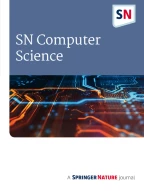Abstract
Linear two-phase commit (L-2PC) protocol is used in the commit processing of distributed transactions via the transaction managers of the various nodes when transaction runs serially. However, it suffers from the poor recovery process and some other associated problems also. In past, almost no effort has been done to overcome the aforementioned problems of L-2PC protocol. This paper is an attempt to propose a Serial Parallel Linear and Fast-paced recovery-centered Transaction (SP-LIFT) commit protocol by modifying the L-2PC. It gives autonomy to the participating cohorts by informing the cohort-in-doubt about the distributed transaction’s state instead of always looking for the coordinator’s stand. The SP-LIFT protocol is also different from LIFT protocol by allowing the second phase of commit processing to go in parallel while keeping the first phase of the commit processing the same as it was in the LIFT protocol. In this way, the SP-LIFT protocol allows the distributed transaction to complete its commit processing earlier as compared to the L-2PC and LIFT protocols. The performance results also confirm that the proposed protocol will be a better alternative.
Similar content being viewed by others
References
Al-Houmaily YJ. On interoperating incompatible atomic commit protocols in distributed databases. In: 1st IEEE international conference on computers, communications, and signal processing with special track on biomedical engineering, pp. 149–156. 2005.
Al-Houmaily YJ. An intelligent adaptive participant’s presumption protocol for atomic commitment in distributed databases. Int J Intell Inf Database Syst. 2013;7(3):242–77.
Gupta S, Sadoghi M. EasyCommit: a non-blocking two-phase commit protocol. In: International conference on extending database technology (EDBT), pp. 157–168. 2018.
Gupta S, Sadoghi M. Efficient and non-blocking agreement protocols. Distrib Parallel Databases. 2020;38(2):287–333.
Skeen D. Nonblocking commit protocols. In: Proceedings of the ACM SIGMOD international conference on management of data, pp. 133–142. 1981.
Pandey S, Shanker U. Transaction execution in distributed real-time database systems. In: Proceedings of the international conference on innovations in information embedded and communication systems, pp. 96–100. 2016.
Gray J. The transaction concept: virtues and limitations. In: VLDB, vol. 81, pp. 144–154. 1981, September.
Gray J, Reuter A. Transaction processing: concepts and techniques. Amsterdam: Elsevier; 1992.
Bernstein PA, Hadzilacos V, Goodman N. Concurrency control and recovery in database systems, vol. 370. New York: Addison-Wesley, Reading, MA; 1987.
Al-Houmaily Y, Chrysanthis P. Two-phase commit in gigabit-networked distributed databases. In: International conference on parallel and distributed computing systems (PDCS). 1995.
Lindsay B, Selinger P, Galtieri C, Gray J, Lorie R, Price T, Putzolu F, Wade B. Notes on distributed databases. Thomas J. Watson IBM Research Center. Research Division. 1979.
Al-Houmaily Y, Chrysanthis P, Levitan S. An argument in favor of the presumed commit protocol. In: Proceedings of the IEEE 13th international conference on data engineering, pp. 255–265. 1997.
Lampson B, Lomet D. Distributed transaction processing using two-phase commit protocol with presumed-commit without log force. Digital Equipment Corp, U.S. Patent 5,335,343. 1994.
Abdallah M, Guerraoui R, Pucheral P. One-phase commit: does it make sense? In: IEEE proceedings of international conference on parallel and distributed systems (Cat. No. 98TB100250), pp. 182–192. 1998.
Al-Houmaily Y, Chrysanthis P. 1-2PC: the one-two phase atomic commit protocol. In: Proceedings of the ACM symposium on applied computing, pp. 684–691. 2004.
P. Reddy and M. Kitsuregawa, “Reducing the blocking in two-phase commit protocol employing backup sites. In: IEEE Proceedings of 3rd IFCIS International Conference on Cooperative Information Systems, pp. 406–415. 1998.
Reddy P, Kitsuregawa M. Blocking reduction in two-phase commit protocol with multiple backup sites. In: International workshop on databases in networked information systems. Springer, Berlin, pp. 200–215. 2000.
Reddy P, Kitsuregawa M. Reducing the blocking in two-phase commit with backup sites. Inf Process Lett. 2003;86(1):39–47.
Alkhatib G, Labban R. Transaction management in distributed database systems: the case of oracle’s two-phase commit. J Inf Syst Educ. 2002;13(2):95–104.
Gray J, Lamport L. Consensus on transaction commit. ACM Trans Database Syst (TODS). 2006;31(1):133–60.
Pandey S, Shanker U. Priority inversion in DRTDBS: challenges and resolutions. In: Proceedings of the ACM India joint international conference on data science and management of data (CoDS-COMAD ‘18), pp. 305–309. 2018.
Shanker U, Misra M, Sarje AK. Distributed real time database systems: background and literature review. Int J Distrib Parallel Databases. 2008;23(02):127–49.
Bernstein P, Goodman N. Concurrency control in distributed database systems. ACM Comput Surv (CSUR). 1981;13(2):185–221.
Pandey AK, Pandey S, Shanker U. LIFT—a new linear two-phase commit protocol. In: Proceedings of 25th annual international conference on advanced computing and communications (ADCOM 2019) at IIIT Bangalore. 2019.
Varakantham P, Gangwani S, Karlapalem K. On handling component and transaction failures in multi agent systems. ACM SIGecom Exchanges. 2001;3(1):32–43.
Funding
This research work was funded by Council of Scientific and Industrial Research (CSIR), New Delhi, India [Grant No. 1061461137].
Author information
Authors and Affiliations
Corresponding author
Ethics declarations
Conflict of interest
On behalf of all authors, the corresponding author states that there is no conflict of interest.
Additional information
Publisher's Note
Springer Nature remains neutral with regard to jurisdictional claims in published maps and institutional affiliations.
This article is part of the topical collection “Emerging Technologies for 5G and Beyond” guest edited by Aloknath De.
Rights and permissions
About this article
Cite this article
Pandey, S., Pandey, A.K. & Shanker, U. SP-LIFT: A Serial Parallel Linear and Fast-Paced Recovery-Centered Transaction Commit Protocol. SN COMPUT. SCI. 1, 186 (2020). https://doi.org/10.1007/s42979-020-00193-0
Received:
Accepted:
Published:
DOI: https://doi.org/10.1007/s42979-020-00193-0
